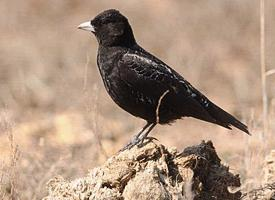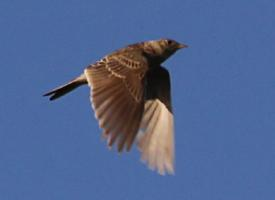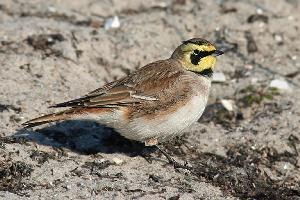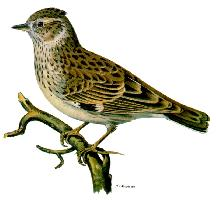
Description de l'animal
The Black Lark (Melanocorypha yeltoniensis) is a distinctive and somewhat enigmatic bird species belonging to the Alaudidae family, which encompasses larks. This species exhibits remarkable characteristics and behaviors that make it a subject of interest among ornithologists and bird enthusiasts alike. Native primarily to the steppes of Kazakhstan and southern Russia, the Black Lark has adapted to life in these expansive, open landscapes, where its presence adds a unique vibrancy to the ecosystem.Adult Black Larks are medium-sized birds, with a robust and somewhat chunky appearance typical of many lark species. They have a length of about 16-18 cm (6.3-7.1 inches) and exhibit a significant degree of sexual dimorphism, particularly in their plumage. The males are strikingly distinctive during the breeding season, with their almost entirely black plumage setting them apart from other lark species. This deep, glossy black extends over most of their body, with slight variations in shade possible. The wings may have a slighter lighter tone, and in some lighting, the black feathers can exhibit a subtle sheen. The female Black Larks, in contrast, have a more subdued appearance with a mixture of brown, black, and white feathers, which provides them with excellent camouflage against the ground. Both sexes have stout bills, suited to their diet of seeds and insects, and strong legs for their terrestrial lifestyle.
Behaviorally, Black Larks are ground-dwelling birds, spending much of their time foraging among the short grasses and plants of their habitat. They have a diet that primarily consists of seeds, but during the breeding season, they will also consume insects, which provide a necessary protein source for their offspring. The bird's song is a melodious and complex series of whistles and trills, often delivered in a fluttering, butterfly-like flight display by the males, who ascend from the ground before parachuting back down as they sing. This display serves both to attract females and to assert territorial dominance over rivals.
Breeding typically occurs from late April through June, with the nest—a simple depression on the ground, concealed under vegetation and lined with plant material—housing a clutch of usually 4-6 eggs. The female exclusively incubates the eggs, with the chicks being altricial (born in an undeveloped state and requiring care and feeding by the parents).
The Black Lark's habitat is characterized by open steppes and grasslands, often with saline soils, where they can be found both in lowlands and at elevations up to several hundred meters. However, their habitat is under threat from agricultural expansion and intensification, which reduces the availability of the undisturbed land they require for breeding and feeding. Climate change also poses a long-term threat by altering the ecosystem balance of their steppe habitats.
Despite these challenges, the Black Lark remains a symbol of the wild, open landscapes of Central Asia, captivating observers with its striking appearance and the haunting beauty of its song. Conservation efforts aimed at preserving natural grasslands and steppe ecosystems are crucial for ensuring the survival of this unique species, along with the broader biodiversity of the regions they inhabit.
Animaux similaires
Nouvelles photos d'animaux
Top 10 des animaux
- Dolphin gull (Leucophaeus scoresbii)
- Japanese macaque (Macaca fuscata)
- Stone loach (Barbatula barbatula)
- Greek tortoise (Testudo graeca)
- Russian tortoise (Testudo horsfieldii)
- Galápagos tortoise (Geochelone nigra complex)
- Diana monkey (Cercopithecus diana)
- Moustached guenon (Cercopithecus cephus)
- Common flying dragon (Draco volans)
- Galápagos penguin (Spheniscus mendiculus)


